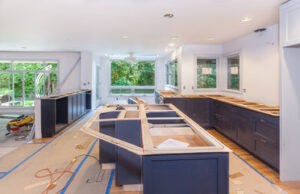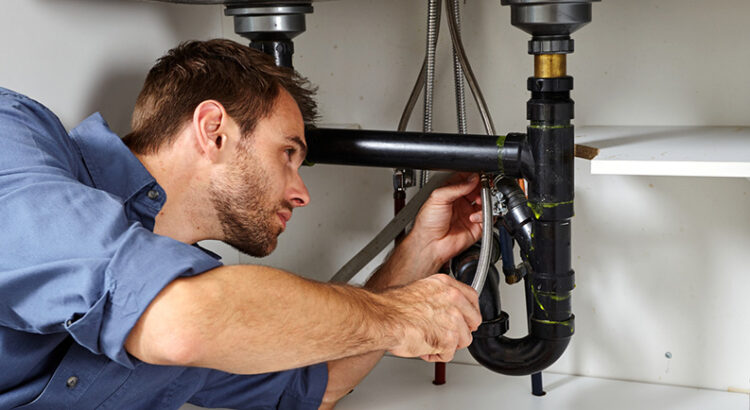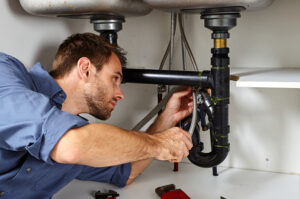If you’re working with a tight budget, consider keeping existing cabinet doors and repainting them for a significant design overhaul at a fraction of the cost. Or add storage elements like pantry drawers or sliding shelves for a more customized look. 
The kitchen is the hub of your home and where much of your family’s daily activities occur. So, ensuring your kitchen layout is functional and efficient is important. You might need to make some changes to correct the flow and floor plan if it isn’t.
Cabinets and appliances are fixed to a single wall in this space-saving design found in lofts and condo spaces. Putting everything in a single corridor eliminates the work triangle and prevents cabinets from blocking windows. However, it’s not ideal for families with large numbers of cooks and can feel cramped.
A popular choice for many homes, the versatile L-shaped layout features countertops on two adjacent walls that form an “L.” This design eliminates traffic and makes it easy to add a dining area. It’s also perfect for incorporating an island.
If you entertain large groups of friends and family, the U-shaped layout might be right for you. With the island as your central gathering point, you’ll have enough room for casual seating so guests can hang out while meals are being prepared. You can even set up a pass-through to serve hors d’oeuvres and drinks during parties.
Appliances
The kitchen appliances you choose are one of the most important decisions during a remodel. They impact almost every other aspect of your design – layout, plumbing and electrical, countertop cut outs, cabinets, backsplash and more. Be sure to start shopping early in the process so you can take your time and find the best fit for your home.
Energy efficiency is a key aspect of any kitchen renovation project. By upgrading to energy efficient models, you can reduce your monthly electricity bills. You’ll also be helping to reduce greenhouse gas emissions, which is good for the environment and the world.
Newer appliances are often safer than older ones, which can be a fire hazard or cause electric shock. A remodel is the perfect time to update your cooking tools and make them safer for you and your family to use.
A kitchen remodel is a great way to create a happy go-to space for your home. By choosing finishes that reflect your personal style and working with a Kowalske designer, you can create a kitchen you love to spend time in. Plus, a well-designed kitchen will increase your home’s value and marketability when it comes time to sell.
Cabinets
The cabinets are one of the biggest showpieces of a kitchen, and they can set the design style for the whole space. The right choice of wood, stain color and door styles will have a huge impact on the overall look of your kitchen.
While cabinets are usually the most expensive part of your kitchen remodel, it’s important to choose wisely. Avoid buying cheap melamine-coated particle board cabinet boxes and drawers with flat panel doors and opt for solid wood frames, dovetail joinery and high-quality finishes.
When choosing your cabinets, think beyond the color and finish of the doors and consider the trim details that will go with them. Crown molding, for example, can add a touch of luxury and help your cabinets look more custom.
You can also choose to change the height of your upper cabinets for a more custom look. Special units such as tall cabinets with appliance storage and corner cabinets can make the most of your space while adding visual interest.
Countertops
Countertops are one of the most important components in any kitchen. They define the room’s style and function, while supporting the cabinets, backsplash, appliances and other features of the space. When considering countertops for a renovation, keep in mind how you plan to use the kitchen, the level of functionality and aesthetics and your budget.
Kitchen countertop materials can be made of a variety of natural or synthetic materials and come in many different styles and finishes. Your choice will depend on how you plan to use the kitchen, what kind of look you prefer and whether you value a surface that’s easy to clean or resistant to heat damage.
Wood is a classic countertop material that can be used in a wide range of styles, from rustic to elegant. It offers visual depth on par with stone and can last a long time if well-maintained. It is, however, prone to heat and knife damage. Stainless steel is another popular option in commercial kitchens, and it’s now a trendy choice for residential ones as well. It is highly durable and shows fingerprints and water spots less than other surfaces, but it’s not an ideal choice for a family with young children.
Lighting
As you consider your kitchen remodel, be sure to include a budget for the entire project. This includes everything from plumbing and electrical to cabinets, appliances, and countertops. It also covers any structural changes you may be making, such as moving walls and installing new flooring. Your renovation plan should also address any specialized features you want to include, like a steam oven or wine fridge.
During the planning stage, it’s important to evaluate the current condition of your kitchen and assess whether it needs to be gutted. This will help you determine the scope of your renovation, which can range from a simple cosmetic refresh to what Ariana Lovato of Honeycomb Design calls “a total gut,” which would involve tearing down walls and reconfiguring the layout.
Adding decorative lighting is an easy way to bring a fresh look to your kitchen. But if your budget doesn’t allow for a complete fixture overhaul, Randall Whitehead of Lumilum suggests installing the infrastructure (the junction box and/or recessed box in the ceiling) early on during the renovation so that you can easily add fixtures later. This is particularly helpful for kitchens with angled ceilings, which can be difficult to light properly.
Flooring
A kitchen remodel is never complete without a new floor. Flooring is a big investment and can have a dramatic impact on your kitchen’s look. The flooring material is also important in terms of durability, water resistance and other special considerations. The best way to select the ideal flooring for your kitchen renovation is to work with a professional flooring and remodeling specialist who understands these specific considerations.
Durability: Kitchen floors have to work overtime, enduring spills, foot traffic and dropped items. Make sure you choose a durable material that will hold up over time, and that resists heat, moisture and staining.
Cost: A kitchen flooring renovation can easily go over budget, so it’s essential to establish your budget before you begin. Look for affordable materials, like vinyl and linoleum, that are easy to maintain, or consider engineered wood planks, which have a top veneer of real wood backed by plywood, making the planks stable and less susceptible to humidity and temperature.
Hardwood flooring is a classic choice for any kitchen and offers warmth and comfort underfoot, as well as beauty that can be updated over the years through refinishing. Concrete flooring might seem harsh for a kitchen, but it can be stained and sealed to look like stone or tile, while being durable and inexpensive.
Hardware
During your kitchen renovation, you’ll need to source various types of hardware for your cabinets and other fixtures. Fortunately, there are plenty of options in terms of style, finish and price point. Generally speaking, you should aim for cohesion by selecting hardware that matches throughout the space. This helps create a unified look and makes your kitchen feel new and fresh.
Cabinet hardware can also be a great way to introduce a pop of color or design pattern. A lot of homeowners opt for knobs that complement their new countertops and backsplashes. However, some walls are less “hardware-friendly,” so it’s important to consider what type of knob or handle will work best in your new kitchen.
Another great option for upgrading your kitchen is to reclaim any unused spaces or corners. For instance, a nook beneath your stairs could make for a perfect spot for a wine bar. In addition, you can rethink your storage and add more in or reconfigure existing cabinets to make the most of your available space. One easy and practical upgrade is to convert any lower base cabinets into drawers instead of basic shelves. Drawers are much more functional than standard shelves, as they allow you to access and view everything in your cabinet.


